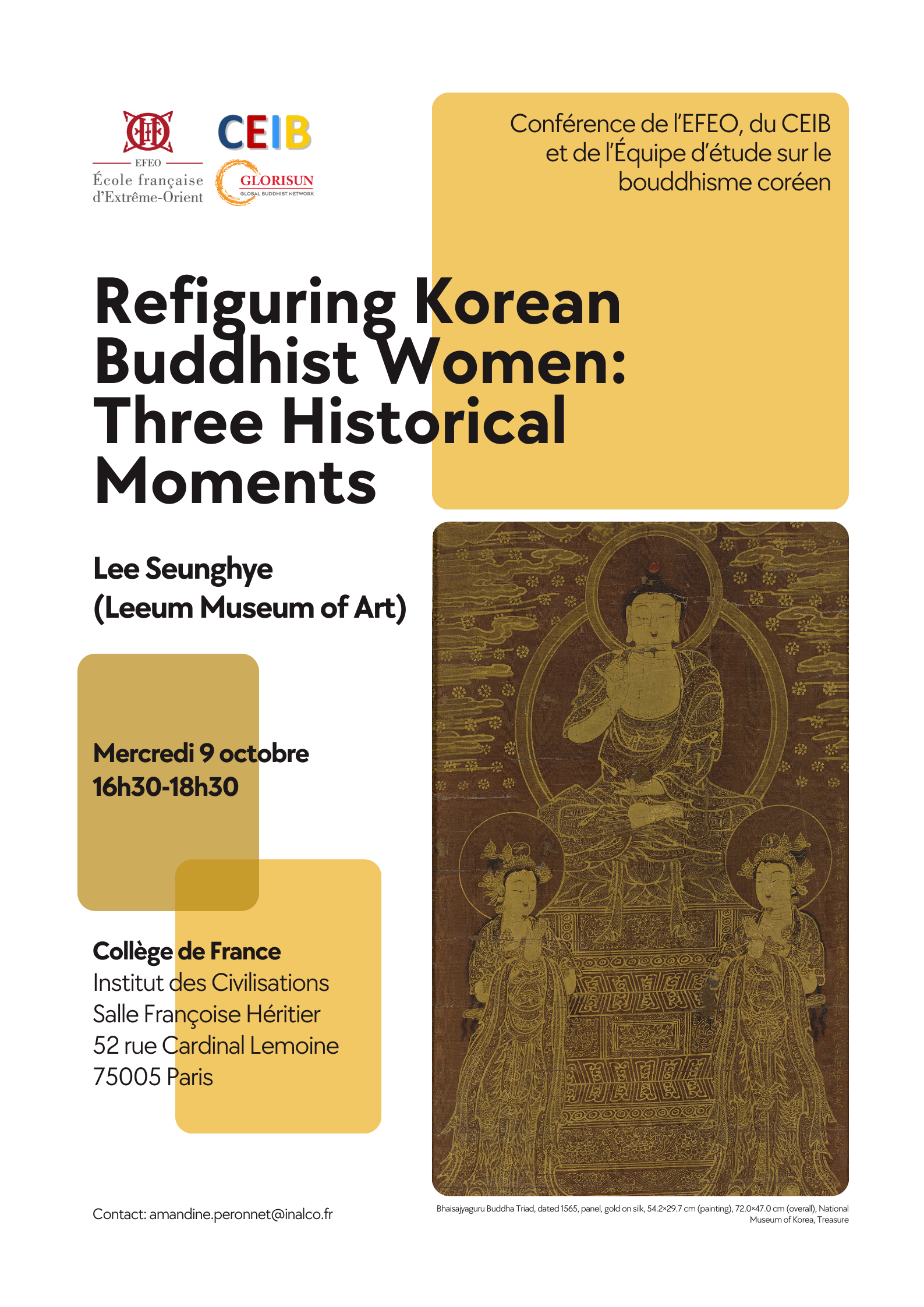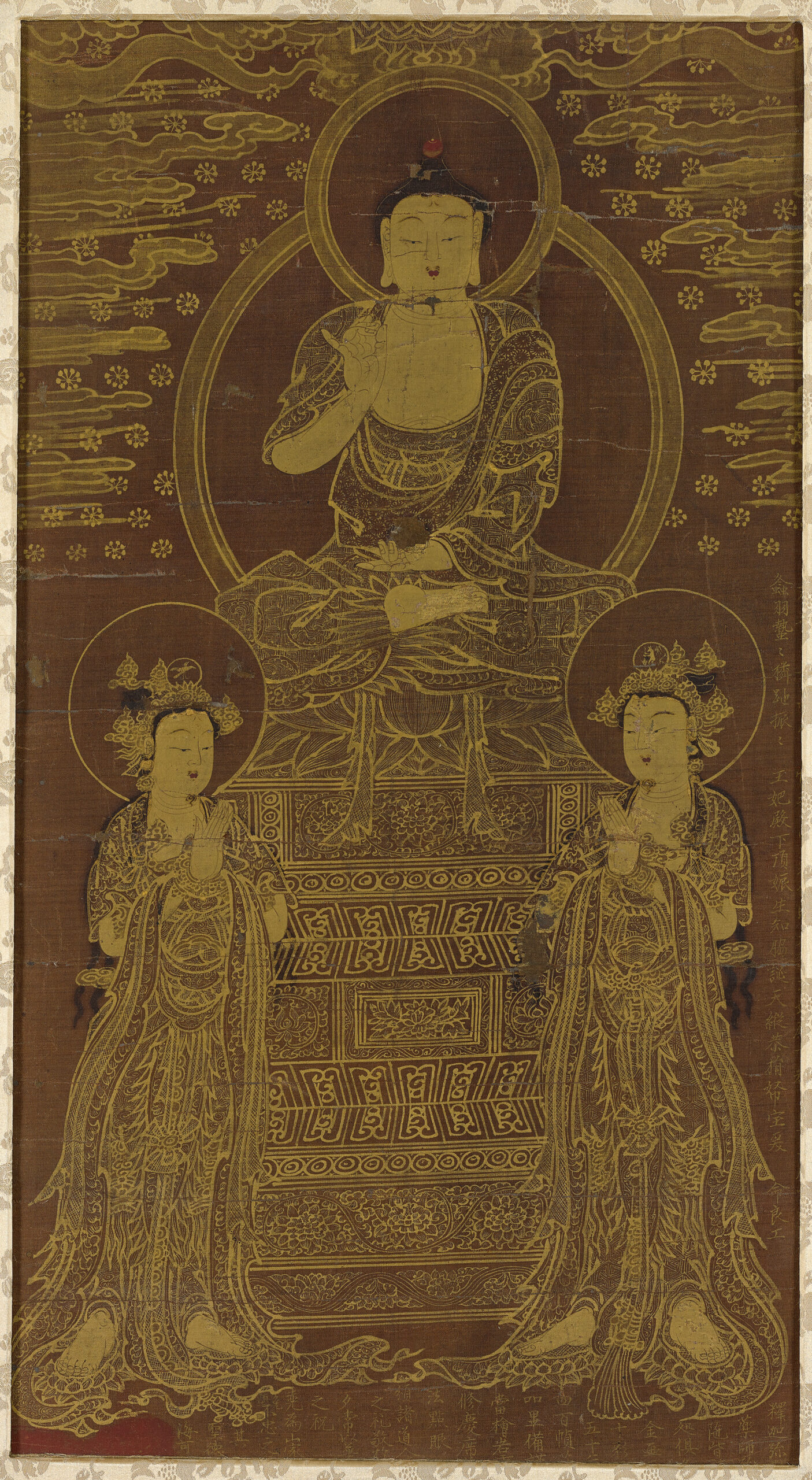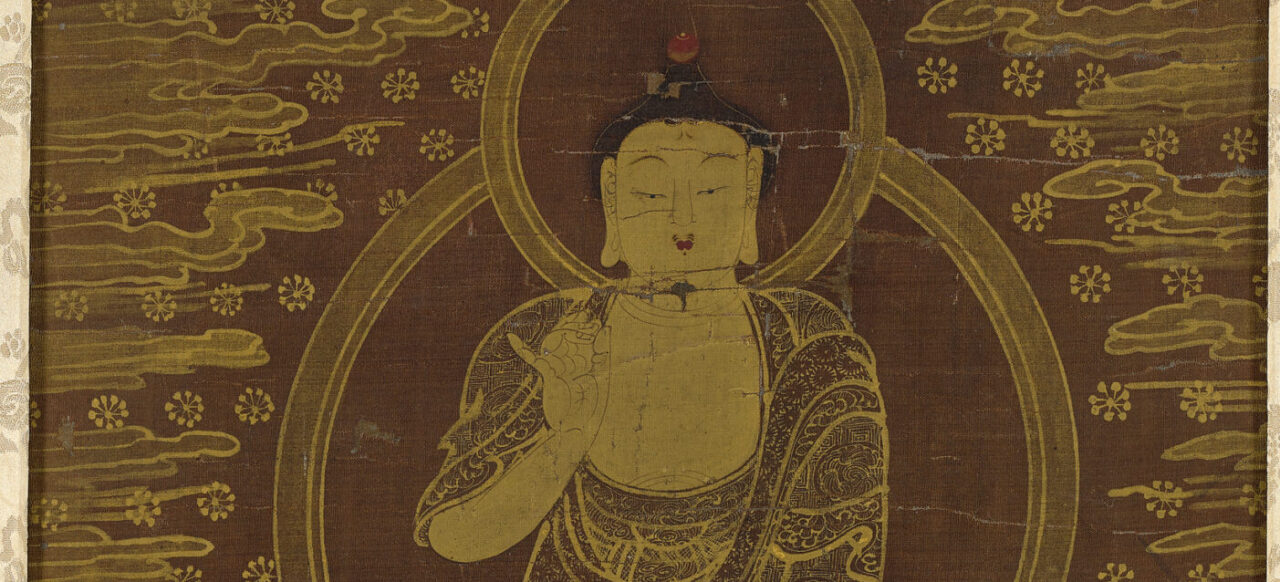L’EFEO et le CEIB organisent conjointement une conférence, qui sera donnée par Mme Lee Seunghye, conservatrice au musée Leeum à Seoul. Cette conférence, qui s’intitule “Refiguring Korean Buddhist Women: Three Historical Moments”, aura lieu le 9 octobre 2024 au Collège de France.
Date et heure : 9 octobre 2024, 16h30-18h30
Lieu : Collège de France, Institut des civilisations, salle Françoise Héritier, RDC du 52, rue Cardinal Lemoine, 75005 Paris
Organisation : Alain Arrault (EFEO), Yannick Bruneton (Université Paris Cité, EPHE)
Contact : Amandine Péronnet

Titre/Title
Refiguring Korean Buddhist Women: Three Historical Moments
Résumé/Abstract
What did women pursue in Buddhism, and how were they seen within the religion? These two questions have inspired a large-scale special exhibition, Unsullied, Like a Lotus in Mud, held at the Hoam Museum of Art in Yongin, Korea in 2024. The exhibition shed new light on the Buddhist art of three major East Asian cultures, particularly Korea, addressing gender-related issues that extend beyond previous explorations focused solely on Chinese or Japanese Buddhist art. Transcending regional and chronological boundaries, Unsullied, Like a Lotus in Mud introduced the theme of women as both objects and subjects in Buddhism through a dazzling array of artworks from museums and collections worldwide. This talk draws from major themes and artworks presented in the exhibition, focusing specifically on Korean Buddhist women. I highlight three moments in Korean history: the late Koryŏ (13th-14th century), mid-Chosŏn (16th century), and the final days of Chosŏn (late 19th and early 20th centuries), when women actively supported Buddhist projects, often in the face of doctrinal discrimination and social constraints. Through an analysis of major art objects, I examine how noblewomen, royal women, and court ladies engaged with Buddhist art patronage and devotional practices to seek their spiritual quests. My examination uncovers the roles of women as patrons, producers, and users of pre-modern Buddhist art at various moments in Korean history. Simultaneously, it reveals the aspirations, frustrations, and negotiations of Korean Buddhist women within the constraints of a patriarchal society. By so doing, this talk contributes to ongoing scholarly efforts to rewrite historical narratives of Korean Buddhist art from women’s perspectives.

| Lee Seunghye is the Curator of Buddhist Art at Leeum Museum of Art in Seoul. Prior to joining Leeum, she worked as Researcher for Academy of Buddhist Studies at Dongguk University. She earned her Ph.D. in art history from University of Chicago in 2013. Her research focuses on the interrelationship among Buddhist images, architectural spaces, and ritual practices in Korean and broader East Asian contexts from the tenth to fourteenth centuries. Her main publications include Pokchang, Image Consecration in Korean Buddhism, a special issue of Cahiers d’Extrême-Asie (2020), co-edited with James Robson and Kim Youn-mi; she is curator of the exhibition Unsullied, Like a Lotus in Mud in Hoam Museum of Art (2024). She is completing a book manuscript, Making of the Buddha: The Material Culture of the Image Consecration in Korea and Beyond. |

Laisser un commentaire